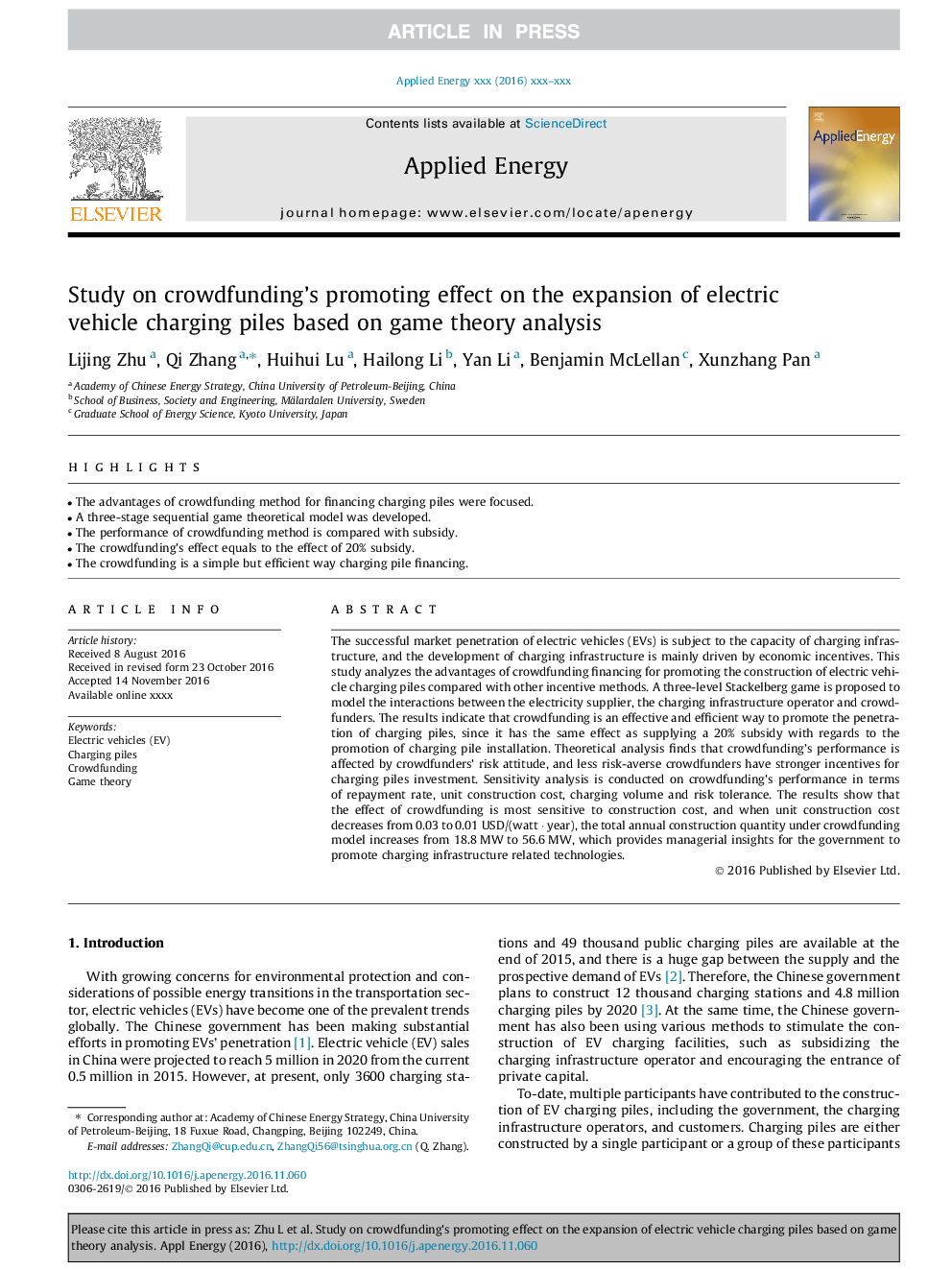| Article ID | Journal | Published Year | Pages | File Type |
|---|---|---|---|---|
| 4916232 | Applied Energy | 2017 | 11 Pages |
Abstract
The successful market penetration of electric vehicles (EVs) is subject to the capacity of charging infrastructure, and the development of charging infrastructure is mainly driven by economic incentives. This study analyzes the advantages of crowdfunding financing for promoting the construction of electric vehicle charging piles compared with other incentive methods. A three-level Stackelberg game is proposed to model the interactions between the electricity supplier, the charging infrastructure operator and crowdfunders. The results indicate that crowdfunding is an effective and efficient way to promote the penetration of charging piles, since it has the same effect as supplying a 20% subsidy with regards to the promotion of charging pile installation. Theoretical analysis finds that crowdfunding's performance is affected by crowdfunders' risk attitude, and less risk-averse crowdfunders have stronger incentives for charging piles investment. Sensitivity analysis is conducted on crowdfunding's performance in terms of repayment rate, unit construction cost, charging volume and risk tolerance. The results show that the effect of crowdfunding is most sensitive to construction cost, and when unit construction cost decreases from 0.03 to 0.01 USD/(watt · year), the total annual construction quantity under crowdfunding model increases from 18.8 MW to 56.6 MW, which provides managerial insights for the government to promote charging infrastructure related technologies.
Related Topics
Physical Sciences and Engineering
Energy
Energy Engineering and Power Technology
Authors
Lijing Zhu, Qi Zhang, Huihui Lu, Hailong Li, Yan Li, Benjamin McLellan, Xunzhang Pan,
